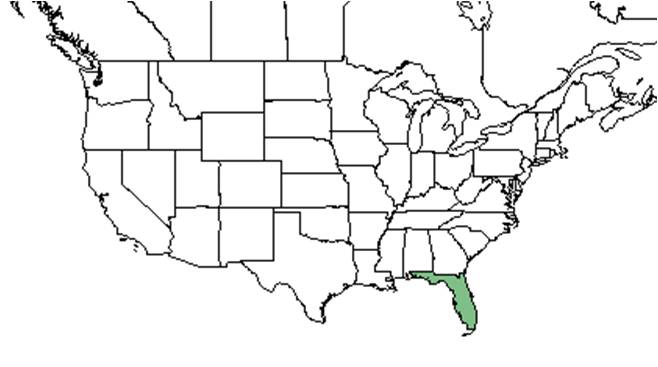Difference between revisions of "Euphorbia rosescens"
KatieMccoy (talk | contribs) |
KatieMccoy (talk | contribs) (→Taxonomic notes) |
||
| Line 20: | Line 20: | ||
Common name: scrub spurge | Common name: scrub spurge | ||
==Taxonomic notes== | ==Taxonomic notes== | ||
| + | Distinguishable from ''Euphorbia floridana'' by broader stem leaves that are not reflexed and do not abruptly contrast with ovate bracteal leaves on the inflorescence <ref name="natureserve">[[http://explorer.natureserve.org/servlet/NatureServe?searchName=Euphorbia+rosescens NatureServe]]Accessed: December 11, 2015</ref>. | ||
| + | |||
==Description== | ==Description== | ||
<!-- Basic life history facts such as annual/perrenial, monoecious/dioecious, root morphology, seed type, etc. --> | <!-- Basic life history facts such as annual/perrenial, monoecious/dioecious, root morphology, seed type, etc. --> | ||
Revision as of 09:24, 15 December 2015
| Euphorbia rosescens | |
|---|---|

| |
| Scientific classification | |
| Kingdom: | Plantae |
| Division: | Magnoliophyta - Flowering plants |
| Class: | Magnoliopsida - Dicotyledons |
| Order: | Euphorbiales |
| Family: | Euphorbiaceae |
| Genus: | Euphorbia |
| Species: | E. rosescens |
| Binomial name | |
| Euphorbia rosescens E.L.Bridges & Orzell | |

| |
| Natural range of Euphorbia rosescens from USDA NRCS Plants Database. | |
Common name: scrub spurge
Contents
Taxonomic notes
Distinguishable from Euphorbia floridana by broader stem leaves that are not reflexed and do not abruptly contrast with ovate bracteal leaves on the inflorescence [1].
Description
Distribution
Ecology
Habitat
Phenology
Seed dispersal
Seed bank and germination
Fire ecology
Pollination
The following Hymenoptera families and species were observed visiting flowers of Euphorbia rosescens at Archbold Biological Station (Deyrup 2015):
Sphecidae: Bembecinus nanus floridanus, Tachysphex apicalis, T. similis, Tachytes mergus
Vespidae: Leptochilus krombeini
Use by animals
Diseases and parasites
Conservation and Management
Cultivation and restoration
Photo Gallery
References and notes
Deyrup, M.A. and N.D. 2015. Database of observations of Hymenoptera visitations to flowers of plants on Archbold Biological Station, Florida, USA.
- ↑ [NatureServe]Accessed: December 11, 2015